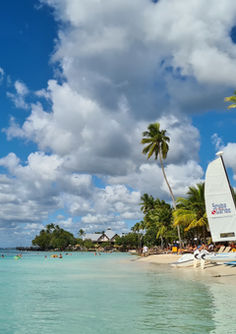

South America Luxury Vacations
South America Luxury Vacations Tailored by Top Travel Experts
A Continent of Wonder, Spirit, and Refined Adventure
South America luxury vacations are designed for travelers who seek not just discovery — but transformation.
From the peaks of the Andes to the wilds of Patagonia, from the vineyards of Argentina to the sacred valleys of Peru, every moment invites awe, intimacy, and the quiet luxury of authenticity.
At Travelwizard.com, we craft bespoke journeys across South America with Virtuoso-level access, insider expertise, and seamless orchestration. Whether your path leads you to Machu Picchu at sunrise, a private yacht through the Galápagos, or a boutique lodge deep in the Amazon, your experience is shaped with artistry, precision, and soul.
This is travel that awakens — the kind that stays with you long after you return home.
The Art of Experiential Luxury
Your journey may include:
-
Private access to Machu Picchu, guided at dawn by expert historians
-
Exclusive Galápagos yacht expeditions, led by naturalists and conservationists
-
Luxury jungle lodges in the Peruvian or Ecuadorian Amazon
-
Wine country retreats in Mendoza or Chile’s Colchagua Valley
-
Patagonia adventures, where glaciers, mountains, and wind meet serenity
-
Colonial elegance in Cartagena, Quito, or Cusco — each reimagined through modern luxury
Every experience is designed with complete attention — from private transfers and local hosts to the finest dining, accommodations, and service.
Nothing is routine. Nothing is left to chance.
This is the art of seamless discovery.
Signature South American Experiences. We Curate
Machu Picchu & The Sacred Valley of the Incas
Private access, historic immersion, and luxurious hideaways among the Andes.
The Galápagos Islands
Exclusive yacht voyages, expert-led expeditions, and rare wildlife encounters.
Patagonia, Chile & Argentina
Vast silence, glaciers, estancias, and nature at its purest and most profound.
The Amazon Rainforest
Boutique eco-lodges, private naturalist guides, and deep immersion in untamed beauty.
Buenos Aires & Mendoza
Tango, gastronomy, and world-class wine in one of the world’s most romantic settings.
Rio de Janeiro & Beyond
Vibrant rhythm, coastal elegance, and sophisticated city indulgence.
Travelwizard’s South American Legacy
For over three decades, Travelwizard.com has designed journeys defined by grace, insight, and trust.
As a Virtuoso member since 1998, we offer:
-
Privileged access to elite properties and private reserves
-
Personalized recognition and service throughout South America
-
Deep local partnerships ensuring authenticity and safety
-
A seamless travel experience shaped by master-level advisors
We don’t simply send you to South America.
We introduce you to its soul — with care, connection, and quiet luxury.
Begin Your South American Journey
Your passions.
Your pace.
Your South America.
Begin Your Private Consultation

Start with our vacation planner so we can match you with our most suitable travel advisor. We do it all for you, air, car, accommodations, tours, you name, it in a seamless luxury vacation experience you will treasure for a lifetime.






